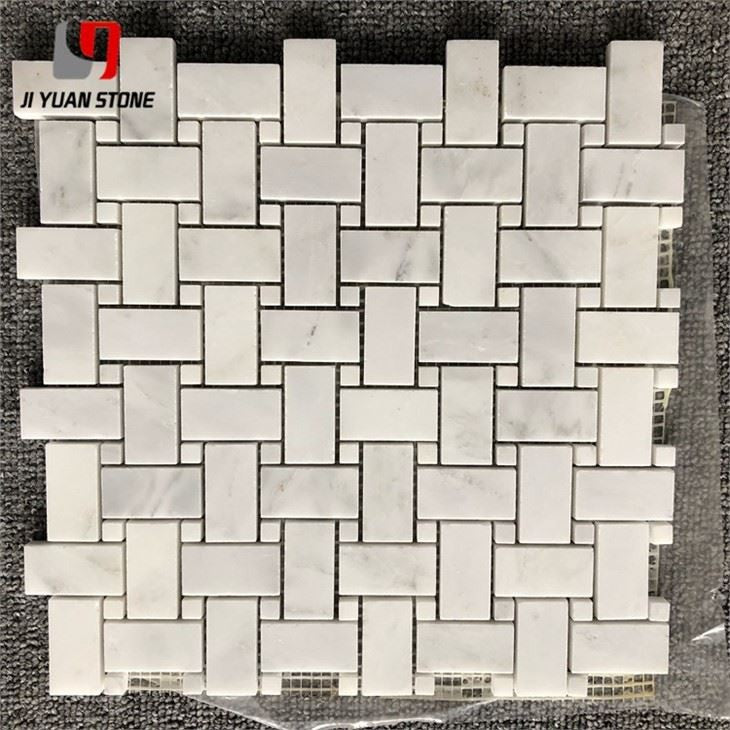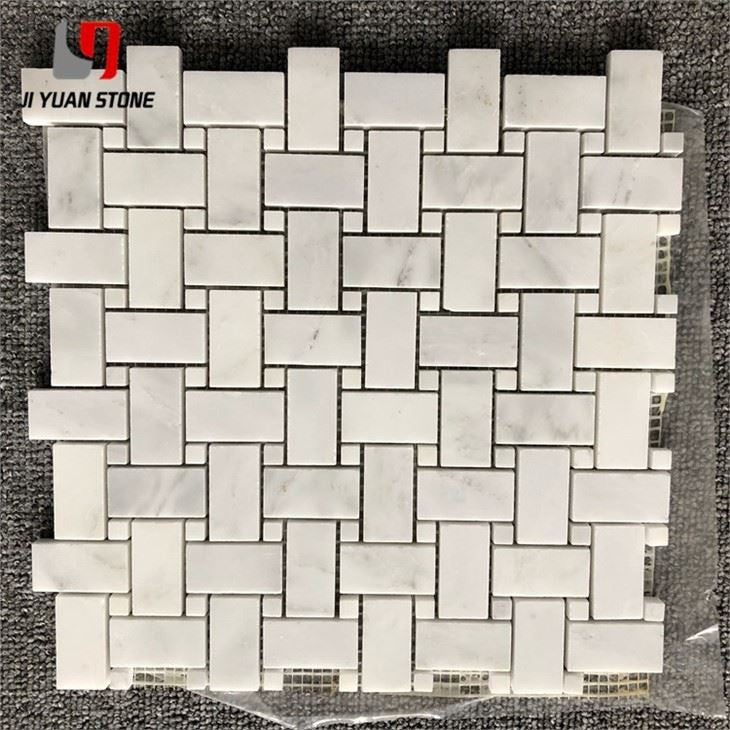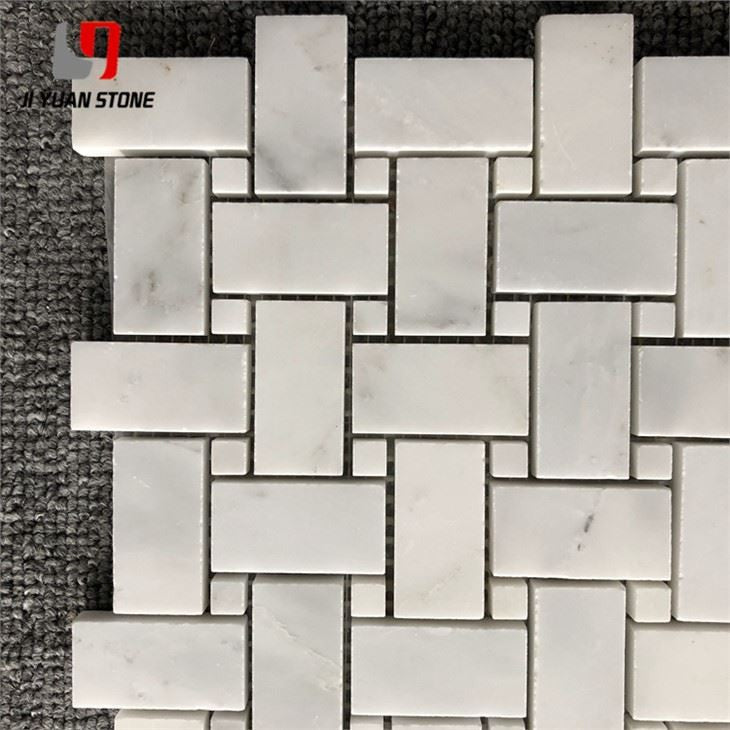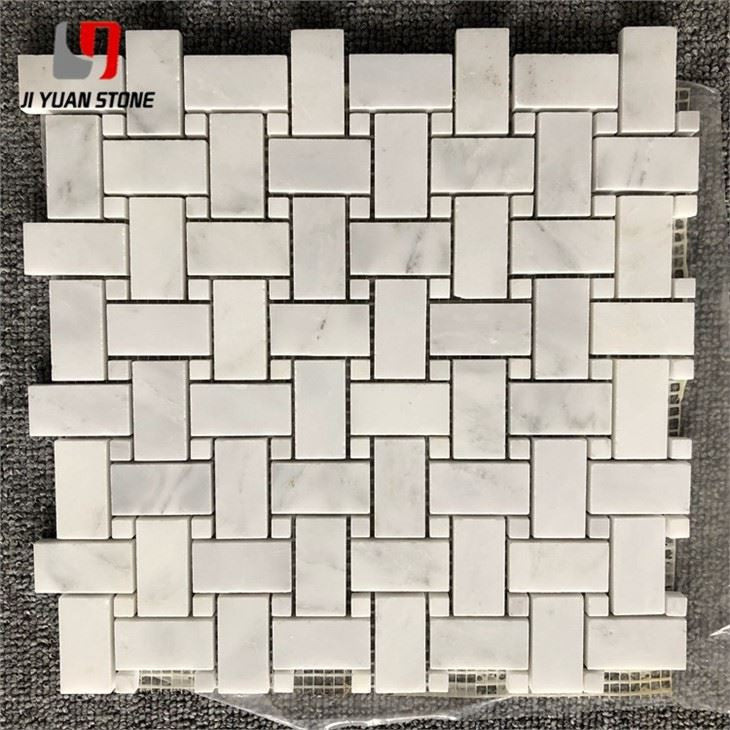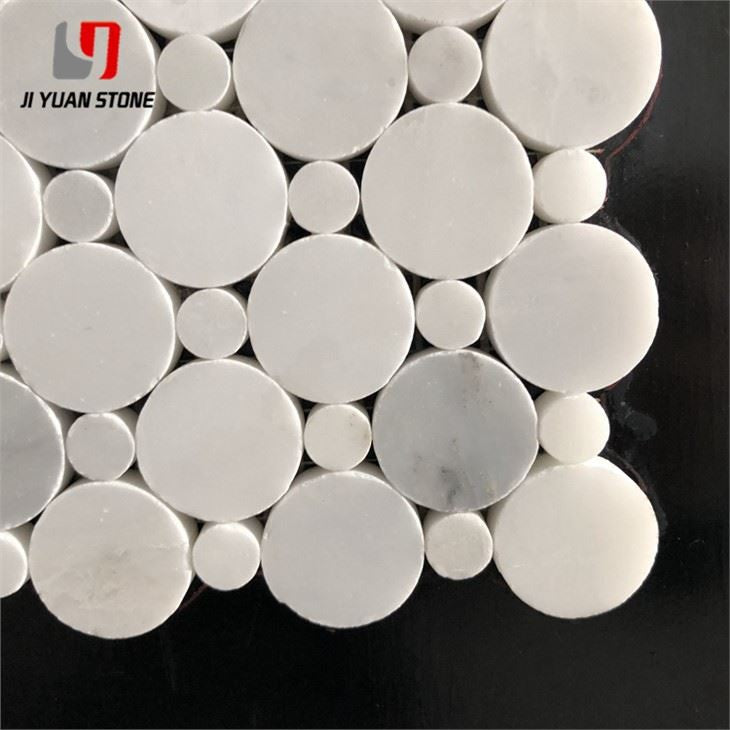Bianco Carrara Arabesque Marble Mosaic is a premium natural marble mosaic, known for its timeless elegance and intricate geometric design. Ideal for walls, backsplashes, and decorative surfaces, this marble mosaic enhances both classic and contemporary interiors.
Bianco Carrara Arabesque Marble Mosaic and Water: A Must-Read for Construction
Key Factors: Hydrophobicity, Water Absorption, and Moisture Content
Three technical parameters are crucial for waterproofing and protecting Bianco Carrara Arabesque Marble Mosaic:
1 . Water Repellency (Hydrophobicity):
- Measured by the contact angle (θ) of water droplets.
- Larger angle = stronger water repellency, better protection against moisture and water damage.
2 . Water Absorption (Hydrophilicity):
- Smaller angle (θ) = higher water absorption, more vulnerability to stains and deterioration.
Water Absorption and Its Impact
Water absorption and hydrophobicity are closely related:
- Higher water absorption rate: Increased risk of contamination and deterioration.
- Lower water absorption rate: Better protection against stains and damage.
Classification by Water Absorption Rate:
- Low: 0.01% ~ 0.09%
- Medium: 0.1% ~ 0.5%
- High: 0.51% ~ 2% or higher
Common Water-Related Issues in Marble
1 . Alkali Return:
- Marble porosity allows water and pollutants to penetrate, causing deterioration.
2 . Salt-Alkali Spots Formation:
- Soluble salts are brought to the surface via water vapor, forming white spots or powdery deposits.
Visual Effect of Alkali Return:
- White powdery deposits or a thin white layer may appear on the surface of the Bianco Carrara Arabesque Marble Mosaic.
By understanding hydrophobicity, water absorption, and moisture content, proper protection and waterproofing techniques can be applied to ensure the long-lasting beauty and durability of Bianco Carrara Arabesque Marble Mosaic in any installation.








